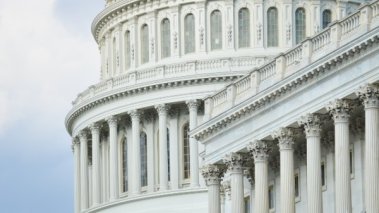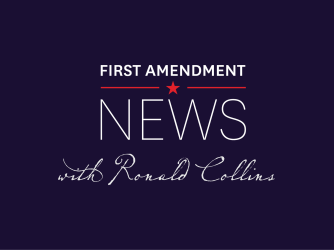Table of Contents
Legislation can protect free speech rights on college campuses: here’s how

FIRE works closely with legislators at the state and federal levels to fight censorship on college campuses. As our readers know, threats to free speech in higher education manifest themselves in many forms, ranging from university policies that restrict protected expression, to attempts to disinvite speakers, to outright hostility to free speech principles by students and the broader public.
But not all of those threats are ideally suited for legislative solutions. Here are our recommendations to legislators on how to ensure that their bills maintain their focus on the aspects of campus censorship that are well-suited to legislative fixes.
At the outset, it’s important to recognize that censorship on college campuses is a product of both legal and cultural factors. Attempting broad cultural change by passing laws is rarely fruitful. Aside from encouraging institutions to add training and curriculum about the philosophy and rationale behind our civil rights — and setting aside the resources for those educational efforts — legislation should probably steer clear of trying to reshape the cultural dynamic that has led to the current climate of censorship on college campuses. Instead, bills should focus on eliminating policies and practices commonly employed by institutions to stifle expression, such as university speech codes.
Although it is not an exhaustive list, below we have outlined four critical areas that can effectively be addressed through legislative remedies:
Eradicating Free Speech Zones
The most common provision in campus speech bills is one designed to eliminate misleadingly labeled “free speech zones.” These zones function more like free speech quarantines, banishing student and faculty speakers to outposts that may be tiny, on the fringes of campus, or (oftentimes) both. Additionally, these policies are routinely accompanied by procedural hurdles that require students to get permission from administrators to speak.
Not all threats to free speech are ideally suited for legislative solutions.
Eliminating free speech zones can be particularly impactful because doing so can help restore speech rights to tens of thousands of students on a campus in one fell swoop.
Free speech zones have been used against students seeking to express a wide range of ideas. They have been used as administrative hurdles to silence students trying to simply hand out copies of the United States Constitution, against those protesting the National Security Agency, and to stop a student passing out animal rights literature, just to name a few examples. Eliminating these zones protects the rights of all students, regardless of their politics, by requiring institutions of higher education to regulate expression in the outdoor areas of college campuses in a manner that is consistent with First Amendment jurisprudence.
Nearly every state to pass free speech legislation has included a provision to end the use of free speech zones as a tool for censorship. In 2019 alone, Texas, Alabama, Arkansas, South Dakota, Iowa, Kentucky, and Oklahoma each did so. The running total is now up to seventeen states who have outlawed free speech zones, and legislation is currently pending in Congress, too.
Overbroad Harassment Policies
Another type of speech code that can be eliminated through legislation is the overbroad anti-harassment policy.
Well intentioned, but deeply misguided policies prohibiting harassment are often written so broadly that, in addition to prohibiting the unlawful harassment they are intended to address, they infringe on students’ free speech rights.
Out of the 411 colleges and universities FIRE reviewed in 2017, 374 schools maintained one or more policies that do not meet the U.S. Supreme Court’s standard definition of peer-on-peer harassment in the educational context that it set forth in Davis v. Monroe County Board of Education.
Requiring institutions to use the Davis standard ensures that institutions can effectively address discriminatory conduct without infringing on free speech rights.
In Davis, the Court recognized that peer-on-peer harassment, properly defined, does not constitute protected speech. However, too many universities across the country use overly broad definitions of harassment that do not comport with the Davis standard, meaning that many such policies sweep in protected speech. The Davis standard requires alleged harassment to be conduct that is “so severe, pervasive, and objectively offensive and that so undermines and detracts from the victims’ educational experience, that the victim-students are effectively denied equal access to an institutions resources and opportunities.”
There are significant consequences to watering down this standard. A great deal of constitutionally protected speech, especially on topics like sexuality and gender, could be punishable under less-exacting standards. This is of particular concern when harassment policies lack an objective offensiveness component, meaning that the speech must be offensive to a reasonable person. After all, someone could find even the most mainstream of opinions on sexuality and gender offensive. Legislation requiring institutions to properly define peer harassment ensures that anti-bullying policies, internet usage policies, and bias incident/hate speech policies address only conduct that is truly unlawful and are not misused to unlawfully restrict student and faculty free speech rights.
Requiring institutions to use the Davis standard to define prohibited harassment ensures that institutions can effectively address discriminatory conduct without infringing on free speech rights.
Security Fees
Legislation can also ensure that institutions don’t apply security fees to potential speakers in efforts to suppress controversial speakers.
Security is often necessary for campus events, and the assessment of security fees on event organizers, in and of itself, is oftentimes unobjectionable. For example, when a student organization plans an event and anticipates a large crowd, or if alcohol will be present, universities may be able to assess fees for these viewpoint-neutral reasons. The key, as the Supreme Court held in Forsyth v. Nationalist Movement, is that any such security assessments must be made in a viewpoint-neutral manner. This means institutions may not assess security fees on the basis of a speaker or group’s viewpoints. They may not, for example, evaluate the opinions of a student group’s invited speaker, or try to predict whether the event will draw opposition protests. Allowing government actors to charge higher security fees to those who might attract protests places a higher burden on disfavored, controversial, or otherwise unpopular viewpoints by empowering critics to raise the costs of those events as an objection to them being held at all.
The assessment of security fees is part of a larger trend of institutions citing vague public safety concerns as the rationale for banning controversial speakers. Frequently, when administrators are claiming a speaker will pose a security threat, they are not actually worried that the speaker will incite his or her supporters to violence, but rather that the speaker’s critics might react violently to their speech. This phenomenon is not without historical precedent. Indeed, during the 1950s and 60s, government actors repeatedly tried to deny permits to civil rights marchers under the theory that the communities where the marches were set to take place would react violently to try to shut the expression down. The courts wisely recognized that allowing the government to shut down or punish speakers on that basis would empower critics to employ the heckler’s veto over their ideological adversaries simply by threatening violence.
On college campuses in modern times, this same dynamic plays out when a security fee is used to burden a controversial speaker because the institution expects the speaker to draw protests. Statutorily requiring institutions to only consider content- and viewpoint-neutral criteria when assessing these fees solves this problem.
Distribution of Student Activity Fees
An often overlooked aspect of campus censorship occurs when student organizations are denied resources based on the viewpoints they hold or advocate. After all, access to student organization funding can be the difference between hosting an event and being unable to afford to do so.
In Board of Regents of the University of Wisconsin v. Southworth, the Supreme Court held that universities may assess students mandatory fees to fund student activities, and that any such collection must be coupled with a requirement that the distribution of fees is done in a viewpoint-neutral manner. This is true whether the distribution is done by administrators or by student governments, as recent cautionary examples at Rutgers University and the University of Rhode Island illustrate.
Yet, student activity fees continue to be denied to organizations with unpopular views. Legislation requiring distribution of student activity fees using only viewpoint-neutral criteria is a simple and effective solution.
Conclusion
From eradicating free speech zones and reining in overly broad harassment policies, to guarding against security fees abuses and mandating viewpoint-neutral criteria for student activity fee distribution, legislators have an array of options to help combat campus censorship.
As always, FIRE stands ready to assist and looks forward to working with lawmakers to expand these protections to students throughout the country.
Recent Articles
FIRE’s award-winning Newsdesk covers the free speech news you need to stay informed.

VICTORY: Michigan town declares Sept. 6 ‘First Amendment Day’ after FIRE sues its mayor for shouting down residents

USC canceling valedictorian’s commencement speech looks like calculated censorship

Back into the FIRE: Hasen’s response to FIRE and Rohde: Don’t read the press clause out of the Constitution — First Amendment News 420
